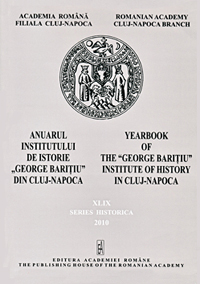Consideraţii privind procesul de ghetoizare a evreilor din Cernăuţi
Considerations on the Czernowitz Jews process of ghettoization
Author(s): Liviu CarareSubject(s): History
Published by: Editura Academiei Române
Keywords: Ghetto; Czernowitz; Traian Popovici; Star of David; deportation; holocaust
Summary/Abstract: The Czernowitz ghetto, established by the Romanian administration of Bukovina in october 1941 contained more than 50,000 jews. The Romanian regime interned all the jews of Czernowitz in a ghetto as a preliminary measure to their deportation to Transnistria. By mid-November, about 30,000 Jews were deported. The conditions created in the ghetto were horrible and unhealthy - usually cramped, dirty, and with little food. To differentiate between Jews and non-Jews, the Military Government of Bukovina forced the Jews to wear the yellow badge (Star of David). A death penalty was enforced on any Jew caught trying to escape or caught outside the ghetto. After the establishement of the ghetto relationships between jews and non-jews developed in a sort of trade: frightened by the imminent deportation the jews were selling their personal items (currency, jewellery, furs, chinaware, crystals) at ridiculously low prices. The hidden death sentence - deportation, was possible only after the Romanian economic needs were satisfied. Thus, a sorting commission was put together. This is how the mayor of Czernowitz, Dr. Traian Popovici managed to persuade the Romanian military governor and General Antonescu to leave the remaining 20,000 Jews, claiming that they were vital to the economic stability of the town. The image of the jews as reflected in primary sources - secret services, gendarmerie and police reports - complete a global picture of the tragic and unfortunate events of the Holocaust in Romania.
Journal: Anuarul Institutului de Istorie »George Bariţiu« - Series HISTORICA
- Issue Year: XLIX/2010
- Issue No: 49
- Page Range: 99-107
- Page Count: 9
- Language: Romanian

